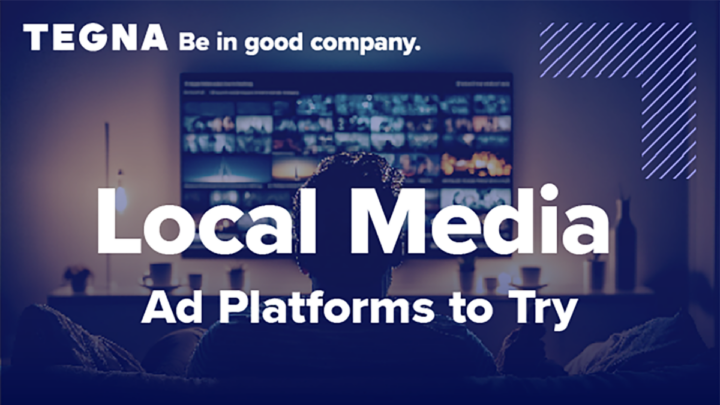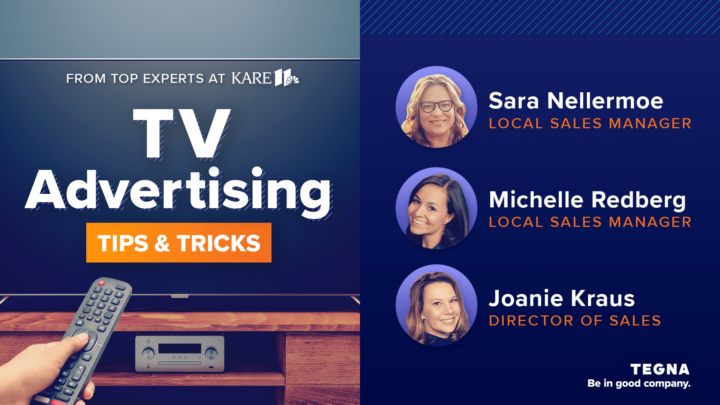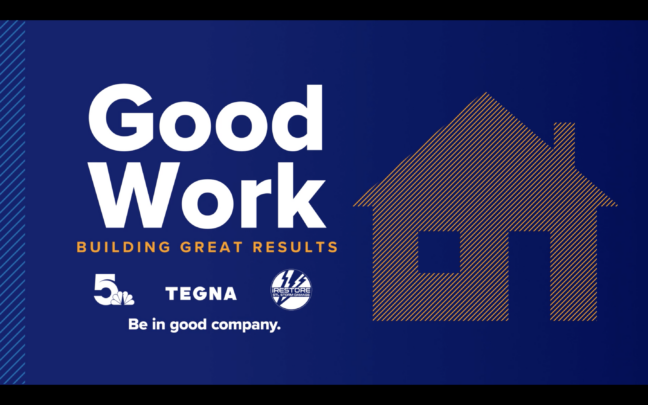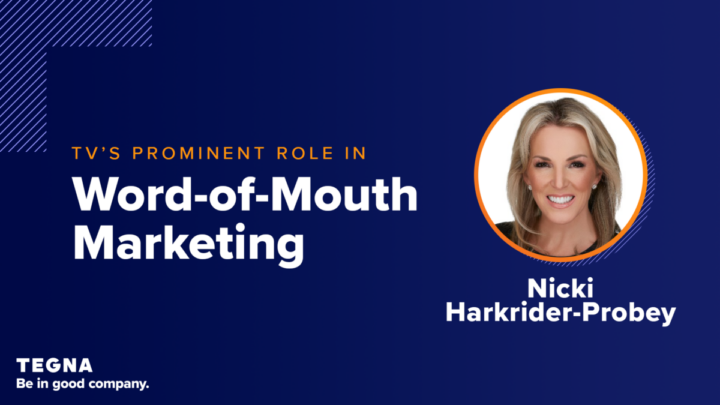What Is Brand Awareness? Definition & Strategies to Improve It
Brand awareness is the cornerstone of successful marketing strategies, representing the extent to which consumers recognize and recall a brand. Join us as we explore the intricacies of brand awareness and uncover effective techniques for elevating your brand’s presence in the market.
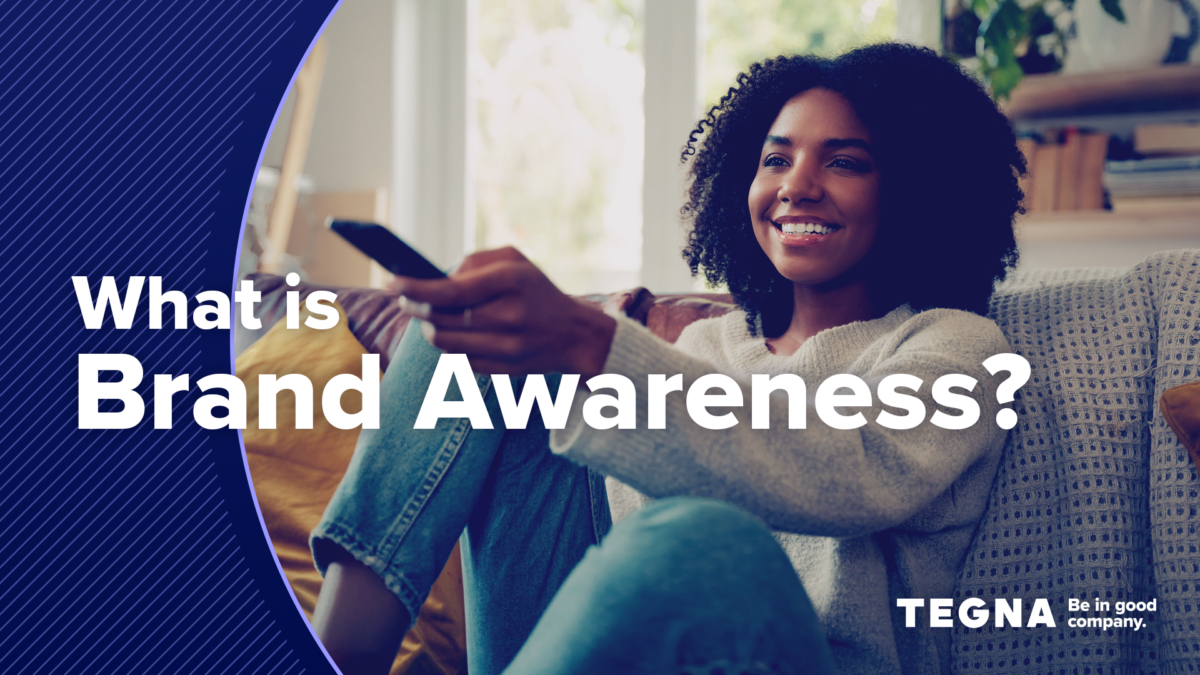
What is Brand Awareness?
Picture this: You’re taking a walk in the city and see a checkmark logo or a billboard. Instantly, you know the advertised brand is Nike. Or, you’re out for a drive and see the golden arches off the next exit. You automatically know a McDonald’s is waiting for you.
This type of brand awareness is the goal of several companies across various industries. After all, brand awareness is the cornerstone of successful marketing strategies. It represents the extent to which consumers recognize and recall a brand, and, ultimately, when you need a new pair of shoes or a quick bite to eat, you turn to these brands to meet your demand.
Not only does brand awareness introduce the public to your goods and services, but they can’t buy what they don’t know about. Research also suggests that recognition leads to trust, significantly impacting consumer behavior. 59% of consumers are more likely to buy new products when they trust a brand.
How Brand Awareness Works
Brand awareness and becoming synonymous with your product or service won’t happen overnight. It occurs through strategic marketing and advertising efforts with interconnected stages that progressively influence consumer perceptions and behaviors.
Exposure
This initial stage involves introducing a brand or product to potential customers through various channels such as advertisements, social media, word-of-mouth, or experiential marketing. Whether it’s seeing a TV commercial, a billboard on the highway, scrolling past an ad on social media, or hearing about a brand from a friend, exposure lays the foundation for brand recognition.
However, the number of times a consumer needs to be exposed to a brand before recognizing it can vary significantly depending on several factors, including the clarity and consistency of the brand’s messaging and visual identity, the relevance to the consumer’s needs or interests, and the effectiveness of the marketing channels used to promote the brand.
While there is no definitive answer or specific number of exposures universally applicable to all situations, researchers and marketers often refer to the “Rule of Seven” or the “Marketing Rule of Seven.” This rule suggests that consumers typically need to be exposed to a brand message at least seven times before they take action, such as making a purchase or engaging with the brand. However, it’s essential to recognize that this number can vary widely. Some consumers may recognize a brand after fewer exposures, while others may require more exposure before the brand registers in their memory.
As a result, brands often need to employ a combination of strategies, including targeted advertising, content marketing, social media engagement, and consistent branding, to ensure repeated exposure and maximize the likelihood of brand recognition.
Recognition
Once exposed to a brand, consumers begin to develop recognition. They can identify the brand’s logo and colors, sing the jingle, and repeat the tagline or catchphrase. This recognition may be conscious or subconscious, but it is a crucial step towards brand awareness. For example, when shopping online, seeing the logo of a familiar brand in the search results may prompt a consumer to click on that link over others.
Familiarity & Trust
As consumers encounter a brand repeatedly and become more familiar with it, they are more likely to consider it when purchasing. Trust also develops when the business invests in advertising, which leads consumers to consider the brand legitimate and trustworthy. Bottom line? Familiarity breeds trust and comfort, leading consumers to choose familiar brands over unfamiliar ones preferentially.
There’s also a phenomenon called the halo effect, in which brands can benefit from being associated with another brand or cause the consumer is familiar with. For instance, when faced with a choice between two similar products at the grocery store, a consumer is likelier to choose a product that is talked about on their local news broadcast than one they are completely unfamiliar with.
Association
With continued exposure and recognition, consumers associate the brand with certain qualities, products, or services. These associations can be with the brand’s messaging, reputation, or personal experiences. For example, consumers may associate a brand’s commitment to sustainability with eco-friendly practices. These associations shape consumer perceptions and influence their preferences when considering similar products or services.
Purchase
Ultimately, the culmination of brand awareness reflects consumer purchasing behavior. Consumers are more likely to choose brands they know and associate positively with when faced with a buying decision. Brand awareness influences the initial purchase and contributes to repeat purchases and brand loyalty over time. For example, a consumer who regularly buys a particular brand of sneakers may continue to do so because of their familiarity and positive experiences with the brand.
Why Is It Important to Build Brand Awareness?
Building brand awareness is crucial for attracting new customers, establishing credibility, measuring business success, driving brand loyalty, differentiating from competitors, and enhancing brand equity. Businesses prioritizing brand awareness invest in long-term growth and success in the marketplace.
- New Customers: When familiar with your brand, consumers are more likely to consider it when purchasing, leading to increased sales and market share.
- Measure Success: Businesses can assess the effectiveness of their marketing campaigns and strategies by tracking brand awareness levels over time.
- Brand Loyalty: When consumers are familiar with and positively associate with your brand, they are more likely to become repeat customers. This is especially important as Harvard Business Review reports it’s 5 to 25 times more expensive to generate a new customer than retain an existing one.
- Brand Equity: Strong brand awareness enhances brand equity by increasing brand recognition, perceived quality, and consumer loyalty. A high level of brand equity can provide competitive advantages and opportunities for brand extension and expansion.
3 Ways to Build Brand Awareness
1. Leverage Television Advertising
TV advertising remains an effective medium for reaching and influencing consumers, leveraging its broad reach, multisensory experience, credibility, targeted capabilities, prime-time viewing, brand recall, emotional connection, and integration with digital marketing efforts. That’s because watching TV is one of America’s favorite activities. The 2023 TVB Media Comparisons Study has a handful of exciting findings, including:
- Time Spent: Americans, on average, spend 5 ½ hours watching Broadcast or Cable TV daily.
- Large Audience: Broadcast TV has the highest reach among platforms – higher than social media, email, radio, and streaming audio, to name a few.
- Audio/Visual: TV ads are, by nature, both audio and visual. Because of this, audiences can better connect to the content emotionally.
- Trustworthy Content: Local broadcasts and local news are the most trustworthy platforms among consumers. Ads that align with trustworthy content add credibility to its brand, products, and services.
- Effective & Influential Ads: TV ads motivate consumers to research a product or service online. TVB finds that TV advertising is still the top medium for advertising to influence customers,
- More Than Commercials: TV opens up an entire world of possibilities in advertising, and it’s not just limited to a 15 or 30-second ad. TV stations offer ad integrations into programming with Lifestyle show appearances, weather, traffic and sports content sponsorships, product placements, and more.
- Significant Results for the Big Screen: A study from MediaScience found that viewers pay more attention to TV and streaming ads on a big screen than their mobile counterparts – ad recall is 2.2 times higher, and purchase intent is 1.3 times higher on the big screen.
2. Combine the Power of Broadcast and Streaming TV
TV is TV, no matter how you watch it. While streaming TV advertising offers all the benefits of broadcast TV advertising, it also lets brands extend their reach and build brand awareness further to an unduplicated audience at regional, state-wide, and national audiences. Adding streaming TV into your media plan also offers:
- Advanced Targeting: Streaming adds extra layers of targeting and scale to capture audiences like cord-cutters and cord-nevers, those who watch on gaming consoles or through streaming sticks, on CTVs or laptops. With streaming, you can narrow your target audiences based on locations down to ZIP codes and consumer trends such as interests, intenders, in-market shoppers, and more.
- Measurable Results: A tool like TEGNA Attribution allows brands to measure the effectiveness of their TV and OTT campaigns by connecting viewing behaviors to engagement metrics, such as website visits and app downloads. This data proves the value of TV/OTT schedules in driving business results, quantifying reach extension, making optimization decisions, and maximizing the effectiveness of their campaigns.
- The Flexibility to Make Optimizations: Backed by Attribution data, optimizations can produce even better business outcomes. For example, let’s say the numbers show that your ad, airing on Sunday mornings, isn’t generating any website traffic. However, that same ad generates a ton of traffic in the evening news. You can then make the data-driven decision to adjust dayparts and programming to generate the best results and eliminate ad dollars that aren’t producing.
3. Create Consistent Cross-Channel Branding
When building brand awareness, it may seem that you need to be everywhere, all the time. And that’s partially true. Depending on what your customer data and target audience research shows you, the best way to create brand awareness is most likely with a cross-channel media strategy that combines broadcast and streaming TV with digital elements that include:
How to Measure Brand Awareness
Attribution is crucial in building brand awareness because it helps marketers understand the effectiveness of their marketing efforts and the impact of different touchpoints on brand visibility and recognition.
Key Brand Awareness Metrics
Setting up marketing attribution for brand awareness involves several steps to track and measure the effectiveness of your brand-building initiatives across various touchpoints. First, you’ll need to determine what specific metrics you want to track:
- Brand Lift: Brand lift studies allow brands to measure brand awareness, recall considerations, and purchase intent by surveying two groups: one who has seen your ad and one who has not. Brand Lift is then calculated by comparing the exposed and control results to survey questions about awareness, recognition, and consideration. Other optional KPIs include Ad Recall, Purchase Intent, Brand Familiarity, Favorability, Preference, and more.
- Impressions: Count the number of times a brand’s content is displayed.
- Traffic or Website Views: Monitor the influx of visitors to the brand’s website and time spent on the site.
- Social Engagement: Measure interactions and engagement on social media platforms such as likes, clicks, comments, and shares.
- Search Volume: Track the frequency of brand-related searches over time.
Implement Tracking Tools
Implement tracking tools and technologies to monitor consumer interactions and collect data across all relevant touchpoints. This may involve using web analytics platforms like Google Analytics, social media analytics tools, ad tracking platforms, CRM systems, marketing automation software, or a measurement tool like TEGNA Attribution. Ensure that your tracking tools are properly configured to capture data accurately.
Track Brand Mentions and Sentiment
Monitor brand mentions and sentiment across social media, review websites, forums, and other online platforms to gauge brand awareness and perception. Use social listening tools and sentiment analysis to track conversations about your brand and identify trends, sentiment shifts, and areas for improvement.
Analyze Attribution Data
Analyze attribution data to understand the impact of different touchpoints on brand awareness. Evaluate which channels and campaigns contribute most to brand visibility, engagement, and recall. Identify patterns, trends, and correlations in the data to inform future marketing strategies and investments.
Optimize Campaigns
Use insights from attribution analysis to optimize your brand awareness campaigns. Allocate resources to channels and campaigns that drive the highest brand lift and ROI. Experiment with messaging, creatives, targeting strategies, and ad placements to maximize the effectiveness of your brand-building initiatives.
Great Brand Awareness Examples from TEGNA
One way to create amazing brand awareness, albeit at a high cost, is to advertise during the Super Bowl. One example is Dunkin’ Donuts’ DunKings spot starring Ben Affleck, Matt Damon, and Tom Brady in distinct orange and pink tracksuits. Audiences loved the ad so much USA Today reports that it only took 19 minutes for the item to sell out on the Dunkin’ merch website.
As the owner of iRestore St. Louis, a local general contractor specializing in roofing in the entire St. Louis metro area, Kirk Kupsky has big ambitions. “In all reality, I want the iRestore lightning bolts to be as recognizable as McDonald’s Golden Arches,” says Kupsky. “When you see that iRestore St. Louis is doing lightning bolt, you know that job.”
To help build brand awareness and generate leads, he partnered with TEGNA’s KSDK / 5 On Your Side, and saw great results and brand fame. “Since partnering with KSDK, we’ve seen tremendous success. We’ve seen our stock rise in the local community regarding recognition, and customers feeling a little more at ease when dealing with somebody they’ve recognized and seen on TV,” says Kirk Kupsky, Owner of iRestore in St. Louis.
By The Yard, a small Minnesota family-owned business that creates maintenance-free outdoor furniture from recycled milk jugs, partnered with TEGNA’s KARE 11 and one that has seen impressive results, as well as brand fame.
“We love it when customers come into our showrooms or wherever they see us and say, ‘Oh my gosh, I remember when I saw your chair swimming in the pool,’” says Steidl. That’s always our goal: to create a memorable, funny, tongue-in-cheek campaign. We create that moment for them, and it kind of gets them talking and keeps us top of mind.”
Build Strong Brand Awareness with TEGNA
At TEGNA, our ultimate goal is to equip brands with insights and marketing solutions to capture the hearts and minds of audiences as diverse as the communities we serve. With 64 broadcast stations in 51 markets nationwide, we know the power of cross-platform ad campaigns that combine broadcast and streaming TV with digital elements. We’re ready to help you effectively reach and engage with your target audience and drive brand awareness. Contact us today to see how we can accelerate your advertising.
Frequently Asked Questions
What is the goal of brand awareness?
The primary goal of brand awareness is to ensure that consumers recognize and recall your brand when making purchasing decisions. By increasing brand awareness, businesses aim to establish familiarity, credibility, and trust among their target audience while establishing repeat customers and increasing sales.
What causes low brand awareness?
Several factors can contribute to low brand awareness, including inadequate marketing efforts, limited visibility across relevant channels, inconsistent branding, lack of differentiation from competitors, and insufficient investment in brand-building initiatives. Failure to effectively communicate the brand’s value proposition, unique selling points, and benefits can also result in low brand awareness.
Does brand awareness increase sales?
Yes, brand awareness can lead to increased sales and revenue. When consumers are aware of a brand and positively associated with it, they are more likely to consider its products or services when purchasing. Strong brand awareness can influence consumer preferences, drive brand preference over competitors, and ultimately result in higher conversion rates and sales.
What’s the difference between brand awareness & brand recognition?
Brand awareness refers to the extent to which consumers are familiar with and recognize a particular brand. It encompasses the ability of consumers to recall and identify the brand when prompted. Brand recognition, on the other hand, specifically refers to the ability of consumers to recognize a brand’s visual elements, such as its logo, colors, or packaging, without the need for explicit cues or prompts. While brand recognition is a component of brand awareness, the latter encompasses a broader range of consumer perceptions and associations with the brand.
How long does it take to build brand awareness?
Building strong brand awareness is an ongoing process that requires patience, persistence, and a long-term commitment to delivering value and engaging with consumers. While some brands may achieve significant awareness relatively quickly through intensive advertising campaigns or viral marketing efforts, others may require more time and consistent investment in brand-building initiatives to establish meaningful awareness among their target audience.
